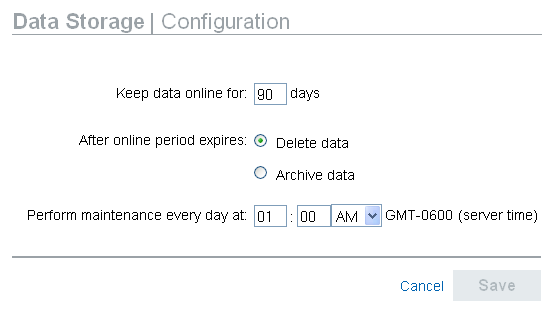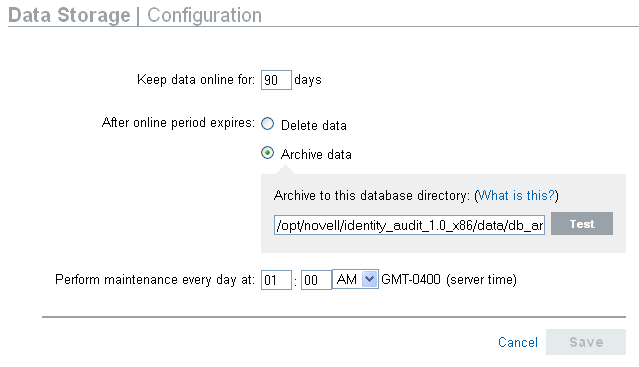7.2 Data Storage Configuration
The database is the repository for incoming events, configuration information, and report results. Identity Audit provides database management procedures to prevent the database from filling up. The Data Storage page, accessible only to administrators, provides the ability to configure several aspects of data storage.
Figure 7-1 Data Storage Configuration

Keep data online for: Administrators can specify the number of days to keep data in the database for reporting purposes. The minimum is one day, and the number must be a whole number (no decimals).
After online period expires: After the online data retention period expires, any event data older than the time period above is either deleted or moved out of the database to an archive directory.
WARNING:Deleted data cannot be recovered, so choose the option with care.
Archive to this database directory: If the option is chosen, data is archived to a specified location before it is deleted. This directory must already exist and the novell user must have write access to it. By default, this location is set to data/db_archive in the Identity Audit home directory. The default directory is created with the proper permissions during Identity Audit installation.
Figure 7-2 Configuration Page when Archive Data is Selected

IMPORTANT:The archive files should be moved periodically to a long-term storage location to avoid filling the hard disk.
Test: If the option is chosen, the button verifies whether the archive directory exists and is writable by the novell user.
Perform maintenance every day at: Specify the time of day for the maintenance routines to be performed. The time is based on the Identity Audit server’s local time. At the scheduled maintenance time, a stored procedure runs to add partitions to the database. Two hours later, a stored procedure runs to archive or delete data older than the configured number of days.
Data archiving should be planned for a time of day when the database usage is relatively low.